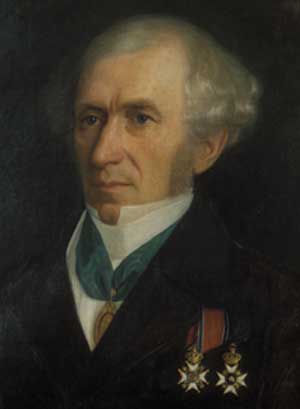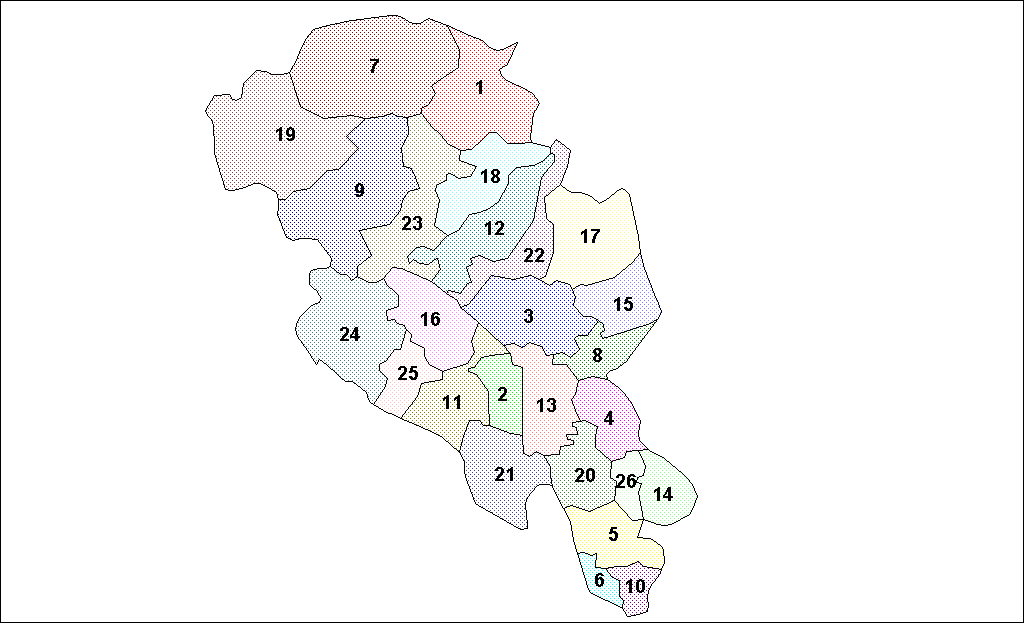|
Vardal
Vardal is a List of former municipalities of Norway, former municipality in the old Oppland county, Norway. The municipality existed from 1838 until its dissolution in 1964. The area is now divided between Gjøvik Municipality and Vestre Toten Municipality in the traditional district of Vestoppland. The administrative centre was the village of Vardal. History The prestegjeld of Vardal was established as a municipality on 1 January 1838 (see formannskapsdistrikt law). According to the 1835 census the parish had a population of 2,921 shortly before it became a municipality. On 1 January 1861 the Gjøvik (town), town of Gjøvik (population: 626) was separated from Vardal to constitute a separate municipality, leaving Vardal with a population of 4,114. On 1 January 1896, a small area of Østre Toten Municipality (population: 49) was transferred into Vardal. On 1 January 1900, an unpopulated area of Søndre Land Municipality was transferred to Vardal. During the 20th century, the t ... [...More Info...] [...Related Items...] OR: [Wikipedia] [Google] [Baidu] |
Gjøvik
Gjøvik () is a List of municipalities of Norway, municipality in Innlandet county, Norway. The administrative centre of the municipality is the Gjøvik (town), town of Gjøvik. Some of the villages in Gjøvik include Biri, Norway, Biri, Bybrua, Innlandet, Bybrua, and Hunndalen. The municipality is the 169th largest by area out of the 356 municipalities in Norway. Gjøvik is the 35th most populous municipality in Norway with a population of 31,175. The municipality's population density is and its population has increased by 3.7% over the previous 10-year period. General information Historically, the Gjøvik (town), village of Gjøvik was part of the parish and municipality of Vardal. On 1 January 1861, the village was granted kjøpstad (town) status. At that time, the village was separated from Vardal to form a separate municipality given its new status as a town. Initially, the new town and municipality of Gjøvik had 626 residents. On 1 July 1921, a part of Vardal municipa ... [...More Info...] [...Related Items...] OR: [Wikipedia] [Google] [Baidu] |
Gjøvik Municipality
Gjøvik () is a municipality in Innlandet county, Norway. The administrative centre of the municipality is the town of Gjøvik. Some of the villages in Gjøvik include Biri, Bybrua, and Hunndalen. The municipality is the 169th largest by area out of the 356 municipalities in Norway. Gjøvik is the 35th most populous municipality in Norway with a population of 31,175. The municipality's population density is and its population has increased by 3.7% over the previous 10-year period. General information Historically, the village of Gjøvik was part of the parish and municipality of Vardal. On 1 January 1861, the village was granted kjøpstad (town) status. At that time, the village was separated from Vardal to form a separate municipality given its new status as a town. Initially, the new town and municipality of Gjøvik had 626 residents. On 1 July 1921, a part of Vardal municipality located just outside the town of Gjøvik (population: 723) was annexed into the town. Ag ... [...More Info...] [...Related Items...] OR: [Wikipedia] [Google] [Baidu] |
Gjøvik (town)
Gjøvik () is a town in Gjøvik Municipality in Innlandet county, Norway. The town is the administrative centre of Gjøvik Municipality. It is located on the western shore of the large lake Mjøsa, about south of the town of Lillehammer and about west (across the lake) from the town of Hamar. The town has a population (2021) of 20,339 and a population density of . This makes it the third largest town in Innlandet county (after Hamar and Lillehammer). The town is located along the river Hunnselva where the river flows into the lake Mjøsa. The town is traditionally an industrial town with several large companies based there including O. Mustad & Son. In 1902, the Gjøvikbanen railway line was built, connecting the town to the national capital, Oslo, which is about to the south. Gjøvik Church is located in the town. The Gjøvik Olympic Cavern Hall is the world's largest sporting facility that is built into the side of a mountain. It was first built to be used as part of ... [...More Info...] [...Related Items...] OR: [Wikipedia] [Google] [Baidu] |
List Of Former Municipalities Of Norway
This is a list of former municipalities of Norway, i.e. municipalities that no longer exist. When the local council system was introduced in Norway in 1837-38, the country had 392 municipalities. By 1958, the number had grown to a total of 744 rural municipalities, 64 city municipalities as well as a small number of small seaports with '' ladested'' status. A committee led by Nikolai Schei, formed in 1946 to examine the situation, proposed hundreds of mergers to reduce the number of municipalities and improve the quality of local administration. Most of the mergers were carried out, albeit to significant popular protest. By 1966, most of the mergers had been carried out and there were only 470 municipalities remaining. This number continued to slowly decrease throughout the remainder of the 20th century. By January 2002, there were 434 municipalities in Norway, and Erna Solberg, Minister of Local Government and Regional Development at the time, expressed a wish to reduce the curre ... [...More Info...] [...Related Items...] OR: [Wikipedia] [Google] [Baidu] |
Oppland
Oppland is a former county in Norway which existed from 1781 until its dissolution on 1 January 2020. The old Oppland county bordered the counties of Trøndelag, Møre og Romsdal, Sogn og Fjordane, Buskerud, Akershus, Oslo and Hedmark. The county administration was located in the town of Lillehammer. Merger On 1 January 2020, the neighboring counties of Oppland and Hedmark were merged to form the new Innlandet county. Both Oppland and Hedmark were the only landlocked counties of Norway, and the new Innlandet county is the only landlocked county in Norway. The two counties had historically been one county that was divided in 1781. Historically, the region was commonly known as " Opplandene". In 1781, the government split the area into two: Hedemarkens amt and Kristians amt (later renamed Hedmark and Oppland). In 2017, the government approved the merger of the two counties. There were several names debated, but the government settled on ''Innlandet''. Geography Oppland ext ... [...More Info...] [...Related Items...] OR: [Wikipedia] [Google] [Baidu] |
Vestre Toten
Vestre Toten is a List of municipalities of Norway, municipality in Innlandet county, Norway. It is located in the Traditional districts of Norway, traditional district of Toten. The administrative centre of the municipality is the village of Raufoss. Other villages in the municipality include Bøverbru, Eina, and Reinsvoll. The municipality is the 287th largest by area out of the 356 municipalities in Norway. Vestre Toten is the 88th most populous municipality in Norway with a population of 13,635. The municipality's population density is and its population has increased by 4.9% over the previous 10-year period. General information Vestre Toten was established as a municipality on 1 January 1838 (see formannskapsdistrikt law). On 1 January 1875, there was a border adjustment between Østre Toten Municipality and Vestre Toten Municipality. On 1 January 1908, the municipality was divided into three parts: Kolbu (municipality), Kolbu Municipality (population: 2,412) in the southe ... [...More Info...] [...Related Items...] OR: [Wikipedia] [Google] [Baidu] |
Snertingdal
Snertingdal is a former municipality in the old Oppland county, Norway. The municipality existed from 1910 until its dissolution in 1964. The area is now part of Gjøvik Municipality in the traditional district of Vestoppland. The administrative centre was the village of Seegård. History The municipality of Snertingdal was established on 1 January 1910 when the municipality of Biri was divided in half. The western part (population: 2,028) became Snertingdal Municipality and the eastern part (population: 2,815) continued as Biri Municipality. During the 1960s, there were many municipal mergers across Norway due to the work of the Schei Committee. On 1 January 1964, the municipality of Snertingdal (population: 2,471) was merged with the town of Gjøvik (population: 8,251), the municipality of Biri (population: 3,274), and most of the municipality of Vardal (population: (9,612) to create a new Gjøvik Municipality with 23,608 residents. Name The municipality is named af ... [...More Info...] [...Related Items...] OR: [Wikipedia] [Google] [Baidu] |
Formannskapsdistrikt
() was the name of a Norwegian self-governing municipality. The name was used from the establishment these municipalities in 1838 until the name fell out of use in 1863. The municipalities had their legal basis from two laws enacted on 14 January 1837. The laws established two types of ; one for cities () and one for rural districts (). These districts were mostly based on the former parishes. City municipalities had a monopoly on trade in both the municiality and for surrounding districts. Each district was to elect two councils that governed the municipality. The upper council was called and the lower council was called . The chariman of this council also represented the municipality at the county level. The destinction between cities and rural districts existed until it was gradually replaced by 1995. is still used as name of the most important council in Norwegian municipalities. In total, 396 municipalities were created under these laws. History The establishmen ... [...More Info...] [...Related Items...] OR: [Wikipedia] [Google] [Baidu] |
Biri (municipality)
Biri is a former municipality in the former Oppland county, Norway. The municipality existed from 1838 until its dissolution in 1964. The area is now part of Gjøvik Municipality in the traditional district of Vestoppland. The administrative centre was the village of Biri. History The parish of Biri was established as a municipality on 1 January 1838 (see formannskapsdistrikt law). On 1 January 1910, the municipality of Biri was divided in half. The western part (population: 2,028) became Snertingdal Municipality and the eastern part (population: 2,815) continued as Biri Municipality. During the 1960s, there were many municipal mergers across Norway due to the work of the Schei Committee. On 1 January 1964, the municipality of Biri (population: 3,274) was merged with the town of Gjøvik (population: 8,251), the municipality of Snertingdal (population: 2,471), and most of the municipality of Vardal (population: (9,612) to create a new Gjøvik Municipality with 23,608 residents ... [...More Info...] [...Related Items...] OR: [Wikipedia] [Google] [Baidu] |
Eina (municipality)
Eina is a former municipality in the old Oppland county, Norway. The municipality existed from 1908 until its dissolution in 1964. The area is now part of Vestre Toten Municipality in the traditional district of Toten. The administrative centre was the village of Eina. History The municipality of Eina was established on 1 January 1908 when the old Vestre Toten Municipality was divided in three. The southwestern part (population: 1,173) became Eina Municipality, the southeastern part (population: 2,412) became Kolbu Municipality, and the northern part (population: 4,027) continued as Vestre Toten Municipality. During the 1960s, there were many municipal mergers across Norway due to the work of the Schei Committee. On 1 January 1964, Eina Municipality (population: 1,591) was merged with Vestre Toten Municipality (population: 9,113) plus the Sørligrenda area of Vardal Municipality (population: 87) and the small area on the south end of the lake Einavatnet (population: 12) fr ... [...More Info...] [...Related Items...] OR: [Wikipedia] [Google] [Baidu] |


